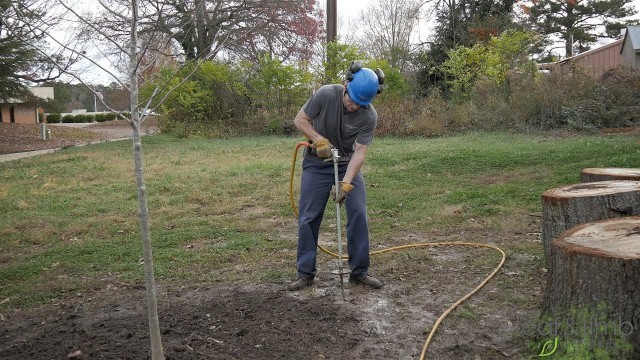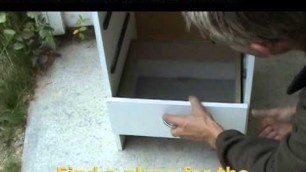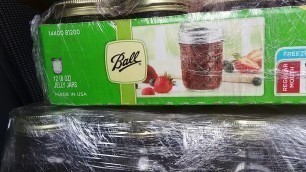

'Trees growing in the suburban landscape must overcome many challenges, of which poor soil conditions may be the most difficult. Before development, there was a natural habitat with a healthy, thriving soil food web. Organic matter was plentiful. It fed microbes and fungi, which fed protozoa, springtails, nematodes, and mites, which fed earthworms, ground beetles, millipedes, centipedes, ants, and spiders, which in turn fed a variety of other higher-level consumers such as birds. This healthy soil food web produced soil conditions with plenty of nutrients and aeration. These were ideal growing conditions for a tree. But during development bulldozers scraped away the upper layers of soil, which contain most of the life. In addition, they heavily compacted the remaining soil. These are difficult growing conditions for a tree. Those that survive are usually unhealthy, stunted, and under constant attack from various pests, including insects and diseases. The good news is that you can improve growing conditions for your tree by doing the following: Feed Your Tree: Deep root fertilization is a great way to feed your tree, though there are other excellent fertilizer products available. Use minimal nitrogen (3 to 10% is plenty, you do not want to over stimulate growth) and minimal phosphorus (therwise your risk polluting the water table). Use products that are all-natural with a low salt index. Most importantly, use fertilizers that have organic matter and microbes in the list of ingredients. These components are essential to helping rebuild the soil food web. Aerate the Soil: Most of the soil food web and the tree’s roots are alive. They need air to survive. Most soils in the suburban landscape are compacted and need aeration. Do this using an Air Spade, or some equivalent air tool. This tool utilizes high-speed air to break up the soil and introduce aeration without damaging the roots. Rebuild the Soil Food Web: Organic matter is the building block of the soil food web. Therefore you should put as much organic matter back into the soil as possible. Here are four ways to do so: - To reiterate, use fertilizers that contain organic matter. - When introducing aeration with the Air Spade, mix organic matter into the soil. We recommend using Black Kow. - Put wood chips or some other similar product around your trees to a depth of 4 inches, but not against the trunk of the tree. Spread the wood chips to the edge of the canopy if possible. - Do not rake away leaves after they fall in autumn. Leave them in place. There are machines that will mulch leaves into grass so they are not visible. When it is all said and done, your most important goal is to re-build the soil food web and recreate what naturally happens in the forest. By doing so, you foster soil that is overflowing with life, has plenty of nutrients, lots of aeration, and provides many other benefits to the tree. Remember, happy trees grow from healthy soils. To learn more, visit http://www.leaflimb.com/ ---------------------- We care for trees because we love our planet. If you need tree care services, advice from our Treecologists, new trees, or want to learn how to heal our planet, let’s chat! We serve Raleigh, Durham, Chapel Hill, Cary, Carrboro, Apex, Holly Springs, Clayton, Garner, Knightdale, Mebane, Morrisville, Pittsboro, and Wake Forest in North Carolina. If you need tree care or arborist consulting from an expert tree service, let’s chat!'
Tags: garden , tree , Microbes , Soil , soil food web , Fertilizer , wood chips , soil health , organic matter , soil compaction , soil aeration , Soil Science (Field Of Study) , Healthy Soil , aeration , happy tree , healthy tree , deep root fertilization , air spade , air tool , poor soil conditions , rebuild the soil food web , black kow
See also:








!['Reaction a ManVsFood Italiano ad Ariccia | DADA VIDEO [VOL.51]'](https://cdn-img01.food2blog.com/images/44-m/101/1010142_m.jpg)





!['Space Food Truck Ship Greenbeef: Space Haven Alpha 10 [EP13]'](https://cdn-img01.food2blog.com/images/44-m/530/530184_m.jpg)


comments